Key Takeaways
- CPAP masks are essential medical devices that create a seal around your nose, mouth, or both to deliver continuous positive airway pressure directly to your airways, preventing dangerous breathing interruptions caused by sleep apnea.
- Three main mask types accommodate different needs: nasal masks for nose breathers, full-face masks for mouth breathers or those with nasal congestion, and nasal pillow masks for minimal contact and claustrophobia concerns.
- Proper mask fit is crucial for therapy success – a well-fitted mask reduces air leaks, prevents pressure points, and stays in position during sleep, while poor fit often leads to therapy abandonment in 30-50% of users.
- Daily cleaning and regular component replacement are essential for maintaining mask effectiveness and hygiene, with cushions requiring replacement every 1-3 months and headgear every 6 months.
- CPAP masks require a prescription from a healthcare provider following sleep apnea diagnosis, and most insurance plans including Medicare and Medicaid cover masks as essential medical equipment with specific replacement schedules.
- Choosing the right mask depends on multiple factors including your sleep position, breathing patterns, facial structure, and comfort preferences – most users try 2-3 different types before finding their optimal fit.
If you’ve been diagnosed with sleep apnea, you’re likely facing a whirlwind of medical terminology and equipment recommendations. Among the most crucial components of your treatment arsenal is something that’ll become your nightly companion: the CPAP mask. This seemingly simple device is actually the critical bridge between you and the life-changing therapy that could transform your sleep quality forever.
Think of your CPAP mask as more than just medical equipment—it’s your gateway to restful nights and energized mornings. With three main components working in harmony (the frame, cushion, and headgear), this specialized mask delivers pressurized air directly to your airways, preventing the dangerous breathing interruptions that characterize sleep apnea.
Whether you’re exploring full-face options or considering nasal designs, understanding what makes each mask unique can dramatically impact your therapy’s success and comfort level.
What Is a CPAP Mask?
A CPAP mask serves as the crucial interface between your face and the CPAP machine’s pressurized airflow. This medical device creates a seal around your nose, mouth, or both to deliver continuous positive airway pressure directly into your breathing passages. Without this essential component, the therapeutic air pressure generated by your CPAP machine cannot reach your airways effectively.
The mask consists of three interconnected parts that work together for optimal performance. The frame provides structural support and houses the air delivery system. The cushion creates a comfortable seal against your skin to prevent air leaks. The headgear system uses adjustable straps to secure the mask in position throughout your sleep cycle.
Your CPAP mask transforms pressurized air from the machine into directed airflow that keeps your airways open. When you breathe naturally during sleep, your throat muscles relax and can collapse, blocking airflow. The mask counteracts this by maintaining steady air pressure that acts like an invisible splint, preventing your airways from closing.
Finding the right CPAP mask matters because comfort directly impacts your therapy success. A properly fitted mask reduces air leaks, eliminates pressure points, and stays in position during sleep movement. Poor mask fit often leads to therapy abandonment, with studies showing that 30-50% of CPAP users struggle with mask-related issues.
Three primary mask types address different facial structures and breathing preferences:
- Nasal masks cover only your nose and work well for mouth breathers who can keep their mouth closed during sleep
- Full-face masks cover both your nose and mouth, accommodating people who breathe through their mouth or experience nasal congestion
- Nasal pillow masks use small cushions that seal directly at your nostrils, offering minimal facial contact
The effectiveness of your CPAP therapy depends on achieving the right mask seal without overtightening. A proper seal prevents air from escaping while allowing you to move naturally during sleep. Most masks feature adjustable components that accommodate different face shapes and sizes.
Your mask choice influences your therapy compliance and sleep quality. Comfortable masks encourage consistent nightly use, while poorly fitted masks can cause skin irritation, air leaks, and sleep disruption. Many CPAP users try multiple mask styles before finding their optimal fit.
Types of CPAP Masks
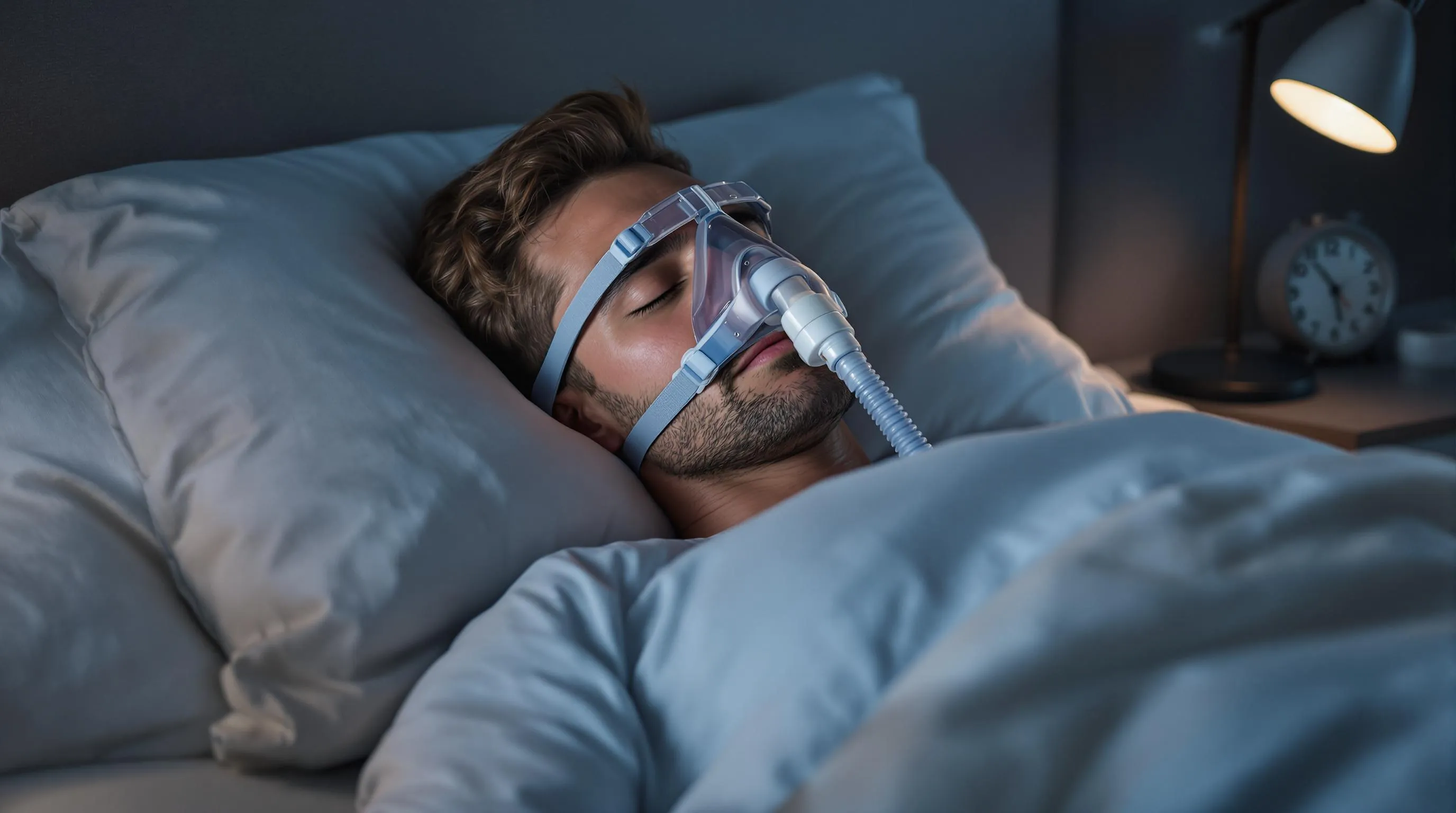
CPAP masks come in three main styles that cater to different breathing patterns and comfort preferences. Each mask type offers distinct advantages and addresses specific challenges you might face during sleep therapy.
Nasal Masks
Nasal masks create a triangular or oval seal that covers your entire nose from the bridge to just above your upper lip. These masks fit securely on a wide range of facial structures and deliver consistent airflow directly through your nasal passages.
Healthcare providers frequently recommend nasal masks if you move around during sleep because they maintain their seal even with moderate movement. The stable design allows for higher pressure delivery when your therapy requires it, making them effective for moderate to severe sleep apnea cases.
You’ll find nasal masks particularly comfortable if you breathe primarily through your nose during sleep. The cushioned seal distributes pressure evenly across your nose area, reducing the likelihood of pressure sores or discomfort. But, you’ll need to keep your mouth closed during therapy, which may require adjustment if you’re a natural mouth breather.
Nasal Pillow Masks
Nasal pillow masks feature small silicone cushions that rest just inside your nostrils rather than covering your entire nose. This minimal design creates the smallest footprint of all CPAP mask types, making them ideal if you experience claustrophobia with larger masks.
The compact design offers several practical advantages. You can wear glasses comfortably while using a nasal pillow mask, and facial hair won’t interfere with the seal. The open design provides an unobstructed field of vision, allowing you to read or watch television before sleep without removing the mask.
These masks work best for lower pressure settings and are particularly suitable if you sleep on your side or stomach. The lightweight construction reduces the pulling sensation that heavier masks can create. But, some users experience nostril irritation initially, though this typically resolves as you adapt to the therapy.
Full Face Masks
Full face masks cover both your nose and mouth with a triangular-shaped cushion that creates a seal around your entire breathing area. This design accommodates both nasal and oral breathing, making it the most versatile option for various breathing patterns.
Your doctor might prescribe a full face mask if you breathe through your mouth during sleep or experience frequent nasal congestion. These masks prove essential for users with chronic allergies, deviated septum, or other conditions that block nasal passages. The dual-pathway design ensures consistent therapy regardless of which breathing route you use during sleep.
Full face masks handle higher pressure settings effectively and work well if you experience mouth leaks with nasal-only masks. The larger surface area distributes pressure more evenly, which can increase comfort for some users. But, the increased size may feel bulky initially, and the mask requires proper positioning to prevent air leaks around the mouth area.
The mask’s comprehensive coverage makes it suitable for users who experience dry mouth with nasal masks, as it humidifies air delivered through both breathing passages simultaneously.
Key Components of a CPAP Mask
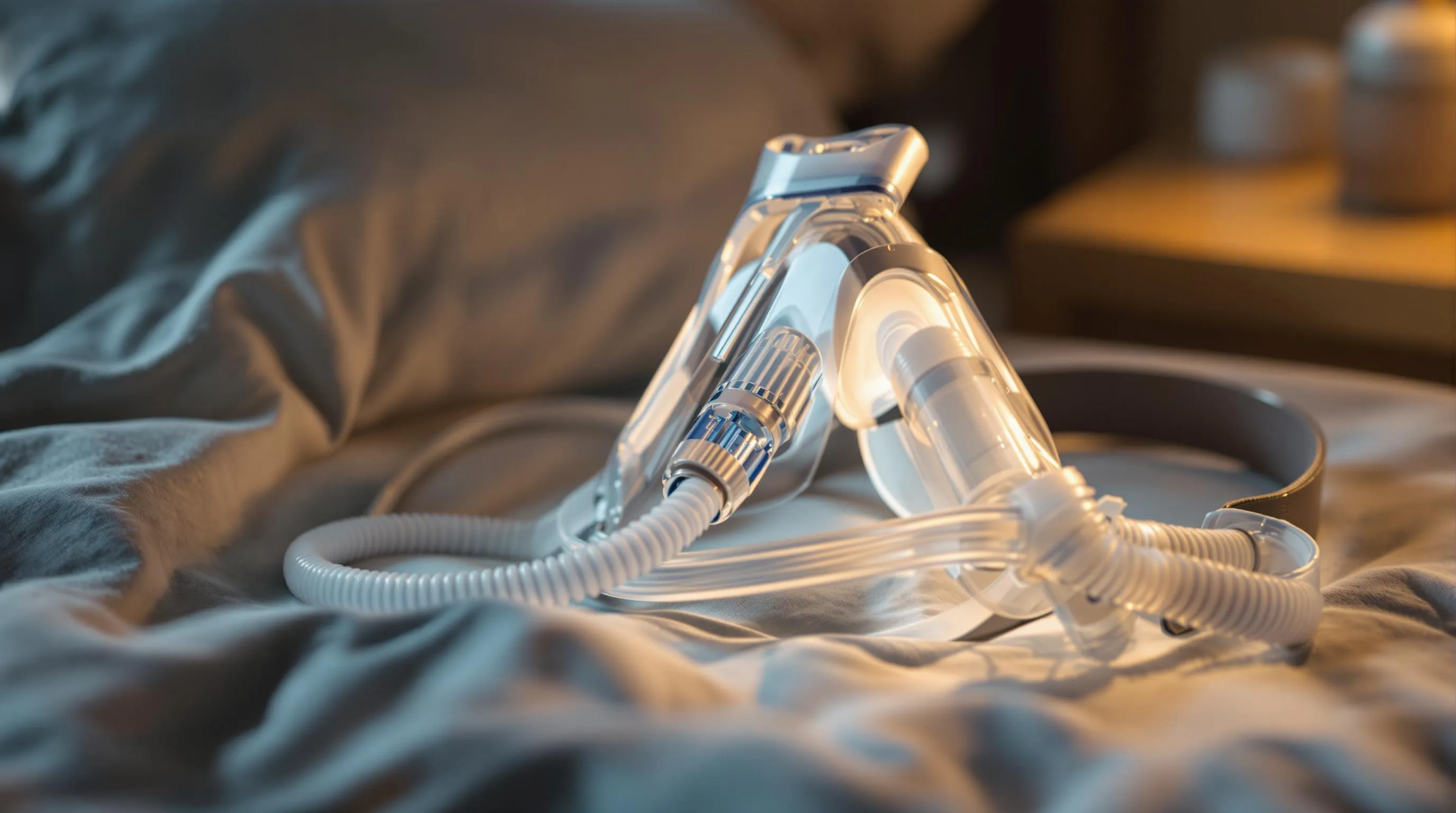
Understanding your CPAP mask’s components helps you maintain effective therapy and identify replacement needs. Each mask contains four essential elements that work together to deliver pressurized air throughout your sleep cycle.
Frame
The frame provides structural support for your entire mask system. This plastic or silicone component connects all other parts and maintains proper alignment during use. Frames feature multiple attachment points where headgear and cushions secure into place.
Most frames use flexible materials that withstand nightly cleaning routines. You replace frames every 3 months or when visible wear appears. Cracks or loose connection points signal immediate replacement needs since damaged frames compromise air delivery.
Cushion
Your mask cushion creates the essential seal against your face. This component sits directly on your skin around the nose or mouth area depending on your mask style. Cushions use soft materials like silicone, gel, or memory foam to maximize comfort while preventing air leaks.
Different cushion materials offer varying lifespans and comfort levels. Silicone cushions last longer but may feel firmer against sensitive skin. Gel cushions provide extra softness but require more frequent replacement. Memory foam cushions conform to facial contours but need regular cleaning to prevent bacterial buildup.
| Cushion Material | Lifespan | Comfort Level | Maintenance |
|---|---|---|---|
| Silicone | 3-6 months | Firm | Easy cleaning |
| Gel | 1-3 months | Very soft | Moderate care |
| Memory foam | 2-4 months | Conforming | Daily cleaning |
Headgear
Headgear secures your mask in position throughout the night. These adjustable straps wrap around your head and use elastic bands or Velcro fasteners for customization. Proper headgear fit prevents mask shifting while avoiding overtightening that creates pressure points.
Modern headgear designs include magnetic clips and quick-release mechanisms for easy removal. You replace headgear every 6 months or when stretching occurs. Signs you need new headgear include requiring constant retightening or visible elastic deterioration.
Elbow Connector
The elbow connector attaches your mask to the CPAP machine tubing. This pivoting joint allows natural head movement during sleep while maintaining consistent airflow. The connector also contains exhaust ports that release exhaled carbon dioxide.
Elbow connectors prevent tube tangling and reduce mask pulling forces. Some models include swivel features that accommodate different sleeping positions. You clean elbow connectors daily since they handle both incoming pressurized air and outgoing exhaled air.
These four components form your complete CPAP mask system. Each part requires specific maintenance schedules to ensure optimal performance. Regular replacement of worn components maintains proper air pressure delivery and prevents therapy interruptions that compromise your sleep quality.
How CPAP Masks Work
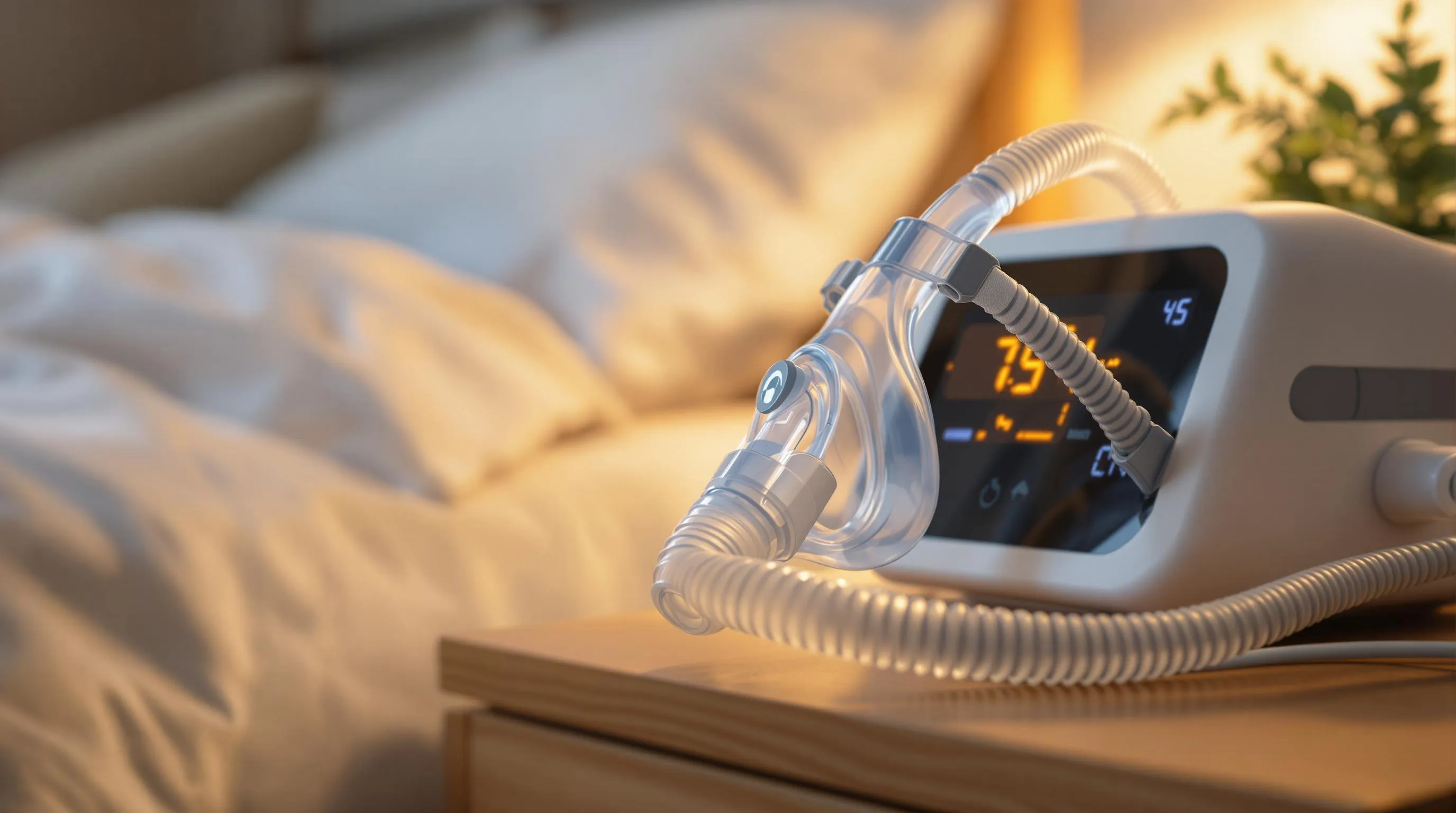
Your CPAP mask creates a pressurized pathway between the machine and your airways through a continuous air delivery system. The mask receives steady airflow from your CPAP machine through a flexible hose connection. This pressurized air travels through the mask cushion into your nose, mouth, or both depending on your mask type.
The mask forms an airtight seal against your face to maintain consistent air pressure throughout the night. When you breathe in, the pressurized air flows directly into your airways. This constant positive pressure prevents your throat tissues from collapsing during sleep, which typically causes breathing interruptions in sleep apnea.
Your CPAP machine generates air pressure measured in centimeters of water pressure (cmH2O). Most users receive therapy pressures between 4-20 cmH2O based on their prescription. The mask delivers this exact pressure to your airways without fluctuation, maintaining open breathing passages even when your throat muscles relax during deep sleep.
The cushion component creates the critical seal between your skin and the pressurized air system. Silicone or gel cushions conform to your facial contours, preventing air leaks that reduce therapy effectiveness. A proper seal maintains the prescribed pressure while allowing natural head movement during sleep.
Air flows through your mask in a one-way direction from the machine to your airways. Exhaled air escapes through small vent holes built into the mask frame or elbow connector. These vents prevent carbon dioxide buildup by allowing exhaled air to exit the system while maintaining incoming pressure.
Your mask works most effectively when the headgear provides secure positioning without overtightening. The headgear distributes mask pressure evenly across contact points on your head and face. This balanced fit prevents the mask from shifting during sleep movements while maintaining the seal integrity.
The elbow connector swivels to accommodate natural head positioning changes throughout the night. This flexible joint prevents the hose from pulling on your mask when you turn or adjust your sleeping position. The swivel action maintains consistent airflow regardless of how you move during sleep.
Modern CPAP masks include pressure relief features that respond to your breathing patterns. Some masks incorporate exhalation pressure relief (EPR) technology that slightly reduces pressure when you breathe out. This feature makes breathing feel more natural while maintaining therapeutic pressure during inhalation.
Your mask’s effectiveness depends on maintaining the prescribed pressure at your airway opening. Air leaks around the cushion reduce this pressure and compromise therapy results. Even small leaks can decrease the therapeutic benefit and trigger pressure alarms on your CPAP machine.
The continuous positive pressure creates a pneumatic splint in your upper airway. This air splint holds your breathing passage open from your nose or mouth down to your larynx. The pressurized air prevents the soft tissue collapse that blocks airflow during apnea events, allowing uninterrupted breathing throughout your sleep cycle.
Choosing the Right CPAP Mask
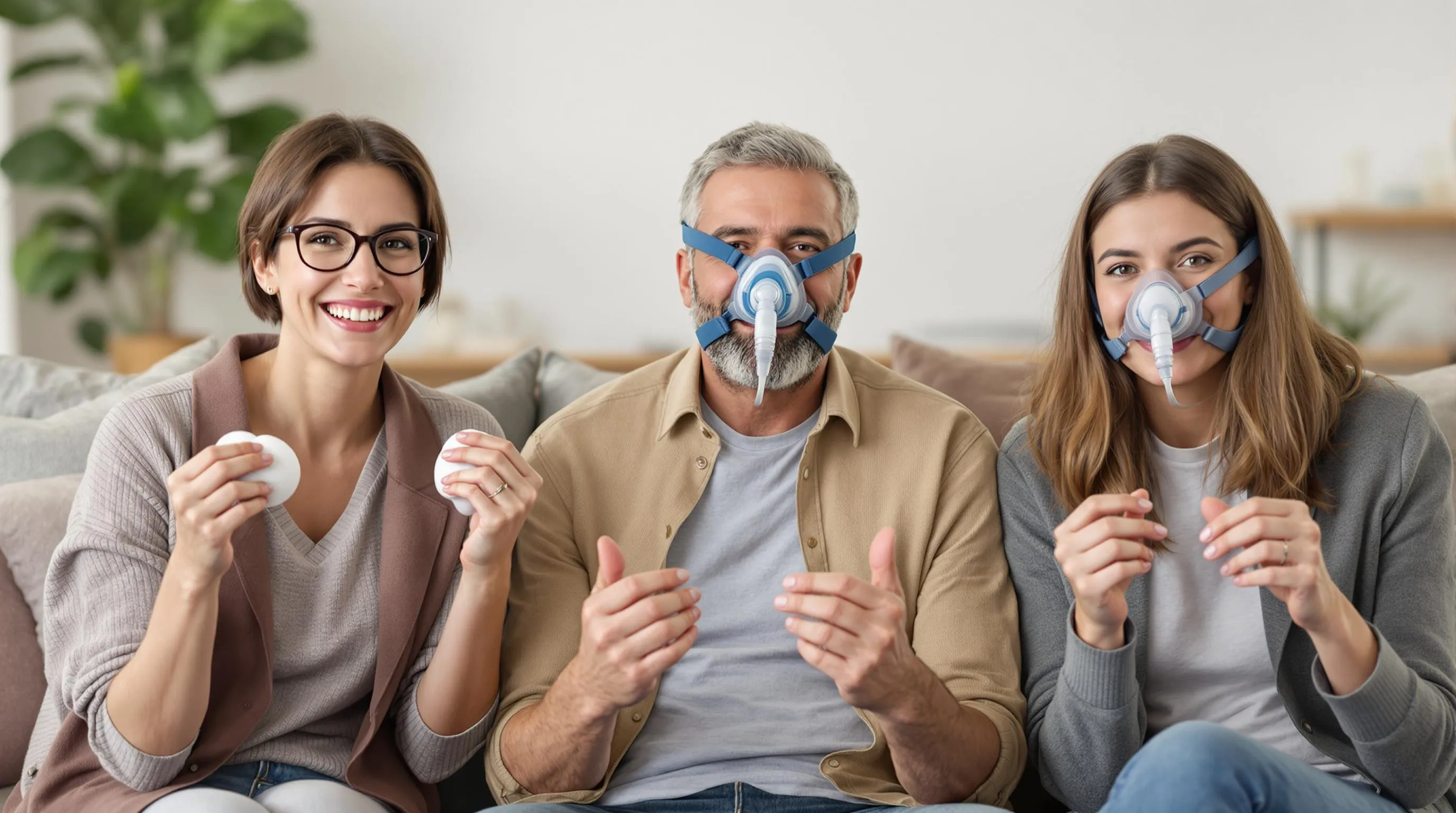
Your sleep apnea therapy success depends heavily on selecting the proper CPAP mask for your unique needs. Mask selection involves multiple factors including your sleeping position, breathing patterns, facial structure, and comfort preferences.
Sleep Position Considerations
Your preferred sleeping position determines which mask type works best for consistent therapy delivery. Each position creates different challenges that affect mask stability and air seal effectiveness.
Side sleepers benefit most from nasal pillow masks or compact nasal masks due to their low-profile design. These masks minimize contact with pillows and reduce the risk of air leaks when you roll to either side during sleep. The lightweight construction prevents mask displacement that commonly occurs with larger designs.
Back sleepers have the most flexibility in mask selection since minimal pillow contact occurs in this position. You can use nasal masks, full face masks, or nasal pillow masks effectively. But, choose headgear that doesn’t fasten at the back of your head to maintain comfort throughout the night.
Stomach sleepers face the greatest challenges with CPAP mask compatibility. Nasal pillow masks offer the best solution due to their minimal footprint and reduced interference with pillow contact. Full face masks typically create pressure points and air leaks when pressed against bedding.
Combination sleepers who change positions frequently during sleep require masks that maintain stability across multiple positions. Nasal pillow masks with secure headgear or low-profile nasal masks provide the best balance between comfort and effectiveness for active sleepers.
| Sleep Position | Recommended Mask Type | Key Benefits |
|---|---|---|
| Side Sleeping | Nasal Pillow, Compact Nasal | Low profile, minimal pillow interference |
| Back Sleeping | All Types Compatible | Maximum mask options available |
| Stomach Sleeping | Nasal Pillow Only | Reduces pressure points and leaks |
| Combination Sleeping | Nasal Pillow, Low-Profile Nasal | Maintains stability across positions |
Breathing Patterns and Comfort
Your natural breathing habits during sleep directly influence which mask type delivers optimal therapy results. Understanding your breathing patterns helps narrow down suitable options and prevents therapy compliance issues.
Nasal breathers achieve best results with nasal masks or nasal pillow masks that deliver pressurized air exclusively through the nasal passages. These masks work efficiently when your mouth remains closed during sleep and provide comfortable airflow without mouth dryness.
Mouth breathers require full face masks that cover both nose and mouth to ensure proper air delivery. These masks accommodate various breathing patterns and prevent air loss through the mouth during sleep. You’ll experience consistent therapy even with nasal congestion or breathing habit changes.
Mixed breathers who alternate between nasal and mouth breathing benefit from full face masks that provide flexibility for changing breathing patterns throughout the night. This design ensures continuous therapy regardless of congestion or sleep position changes.
Comfort factors significantly impact long-term therapy success. Mask materials affect skin irritation and pressure points, with soft silicone cushions providing the most comfortable experience for extended wear. Lightweight designs reduce facial pressure and minimize red marks or discomfort.
Facial hair considerations influence mask selection since beards and mustaches can interfere with proper sealing. Nasal pillow masks work best with facial hair since they seal inside the nostrils rather than against facial skin. Full face masks may require special techniques or trimming for effective sealing.
Claustrophobia concerns often affect mask acceptance and therapy compliance. Nasal pillow masks offer the least coverage and create minimal claustrophobic feelings. Users who experience anxiety with larger masks find these minimal designs more tolerable for consistent nightly use.
Proper mask fitting requires trying multiple sizes and styles to achieve optimal comfort and effectiveness. Most users test 2-3 different mask types before finding their ideal match. Healthcare providers recommend starting with the least invasive option that meets your breathing needs and adjusting based on comfort and therapy effectiveness.
Benefits and Drawbacks of CPAP Masks
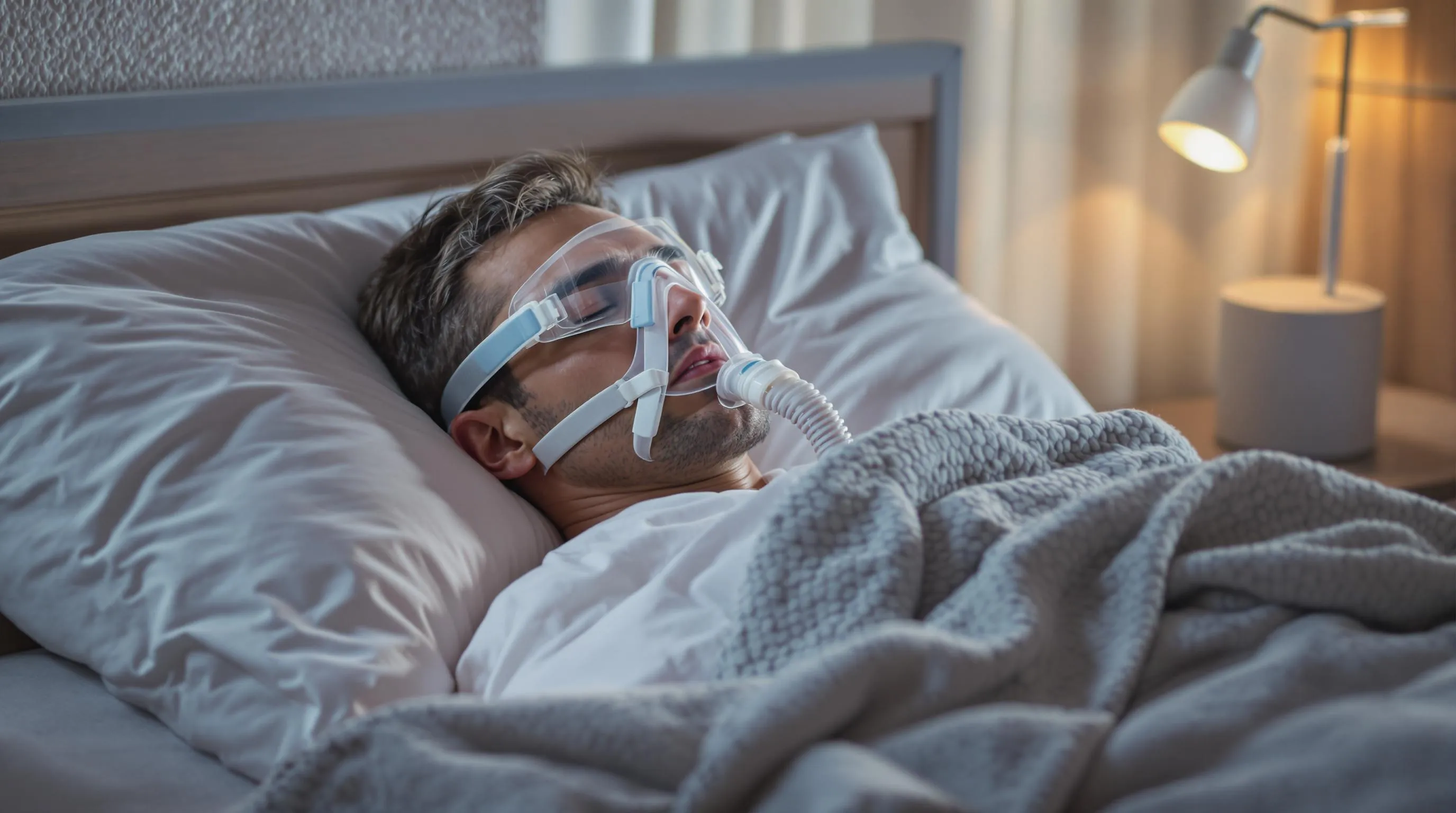
CPAP masks offer significant advantages for sleep apnea treatment while presenting certain challenges that users can overcome with proper guidance and adjustments.
Benefits of Using CPAP Masks
Effective Sleep Apnea Treatment
CPAP masks reduce breathing interruptions during sleep by delivering consistent pressurized air to your airways. This continuous airflow prevents throat tissue collapse and maintains oxygen levels throughout the night. Studies show that consistent CPAP use reduces apneic events by 85-90% in most users.
Immediate Sleep Quality Improvements
You’ll experience better sleep quality within days of starting CPAP therapy. The mask ensures uninterrupted breathing cycles, leading to deeper REM sleep phases. Most users report feeling more rested and alert during daytime hours after just one week of consistent use.
Long-term Health Benefits
Regular CPAP mask use provides measurable health improvements over time. Your blood pressure typically decreases within 2-3 months of consistent therapy. The reduced strain on your cardiovascular system lowers your risk of heart attack and stroke by up to 40%. Also, improved oxygen delivery enhances cognitive function and memory retention.
Versatile Design Options
Modern CPAP masks accommodate different face shapes, sleeping positions, and comfort preferences. You can choose from nasal masks, nasal pillow designs, or full-face options based on your breathing patterns. This variety ensures that you can find a mask that fits your lifestyle and sleeping habits.
Reduced Snoring Impact
CPAP masks eliminate snoring by keeping your airways open throughout the night. This improvement benefits both you and your sleep partner, creating a quieter sleep environment for everyone in your household.
Common Challenges and Side Effects
Initial Adjustment Period
Getting used to wearing a CPAP mask takes time and patience. You might feel claustrophobic or uncomfortable during your first few nights of use. Starting with shorter wearing periods during daytime hours can help you adapt gradually to the sensation of pressurized air.
Skin Irritation and Pressure Marks
Improper mask fit causes skin irritation, redness, and pressure ulcers where the mask contacts your face. These issues indicate that your mask doesn’t fit correctly and requires immediate adjustment. Using hypoallergenic materials and ensuring proper cushion placement reduces skin problems significantly.
Air Leaks and Seal Issues
Masks that don’t seal properly create air leaks that reduce therapy effectiveness. You’ll hear whistling sounds or feel air escaping around the mask edges when leaks occur. Regular cushion replacement every 3-6 months and proper headgear adjustment maintain optimal seal performance.
Dry Air Side Effects
CPAP therapy can cause dry mouth, nasal congestion, and nosebleeds due to continuous airflow. Using a heated humidifier with your CPAP machine adds moisture to the air and reduces these uncomfortable symptoms. Most users find that humidification makes therapy much more tolerable.
Travel and Portability Concerns
CPAP machines and masks can be bulky for travel situations. But, many insurance plans cover travel-sized CPAP units, and TSA regulations allow CPAP equipment as carry-on items without counting toward luggage limits.
Mask Displacement During Sleep
Active sleepers may experience mask shifting or removal during the night. This displacement interrupts therapy and reduces treatment effectiveness. Proper headgear adjustment and choosing masks designed for your sleeping position minimizes this problem.
CPAP Mask Maintenance and Care
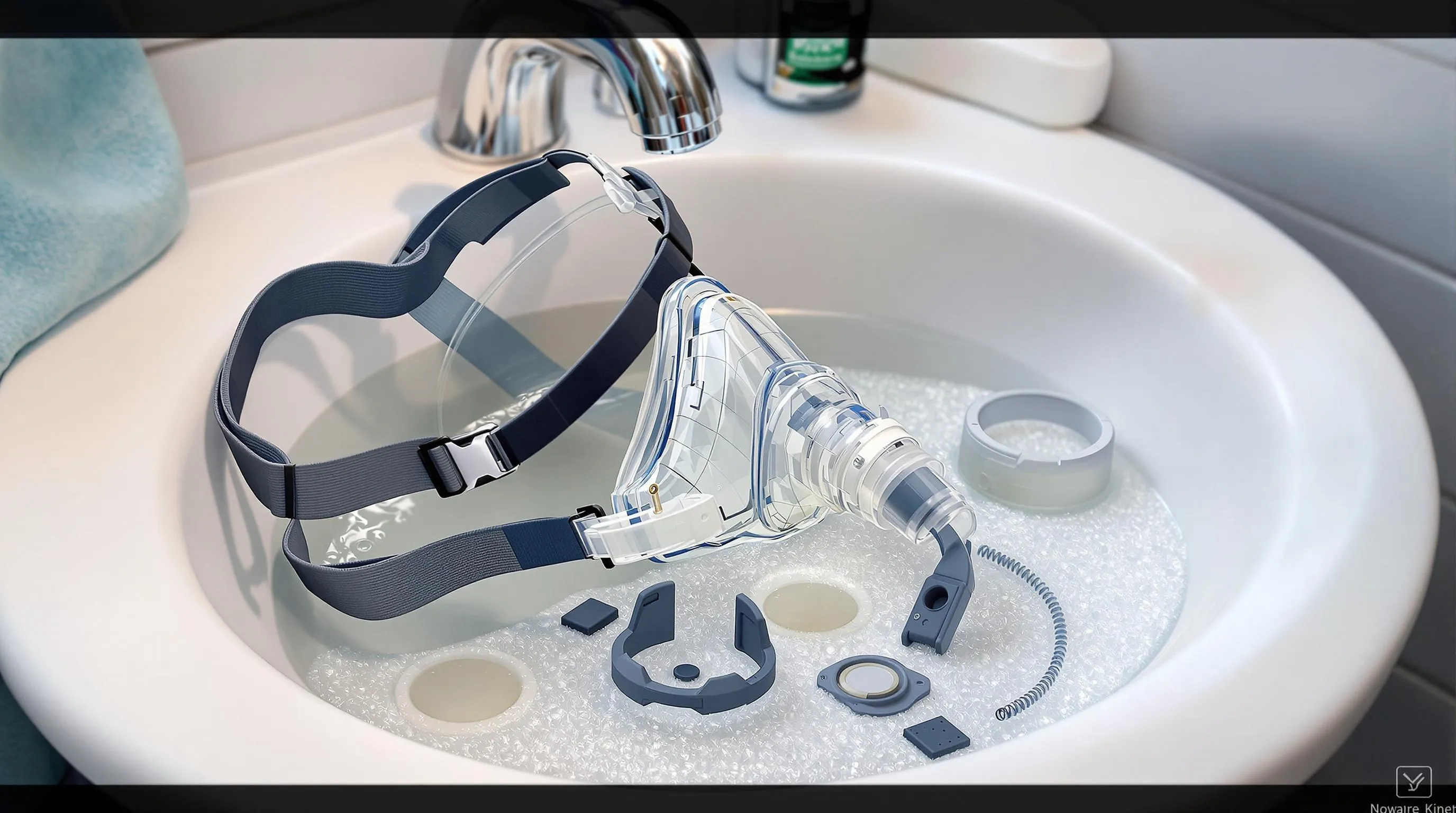
Proper CPAP mask maintenance ensures optimal therapy effectiveness and extends your equipment’s lifespan. Daily cleaning and timely component replacement prevent bacterial buildup and maintain the airtight seal that’s essential for successful sleep apnea treatment.
Cleaning Your CPAP Mask
Clean your CPAP mask every morning after use to prevent oils, sweat, and bacteria from accumulating on the surface. Start by disconnecting the mask from the hose and disassembling all components including the headgear, cushion, and frame.
Fill a basin with warm water and add a small amount of mild soap without moisturizers, harsh detergents, or strong fragrances. Gently wash each component until all dirt, oil, and skincare product residue disappears from the surface. Pay special attention to the cushion area where your skin makes direct contact.
Rinse each component thoroughly with warm water to remove all soap residue. Place all components flat on a clean towel to air dry, turning them at least once to ensure complete drying. Avoid using harsh chemicals, alcohol-based solutions, or placing components in direct sunlight as these can damage the materials and cause premature degradation.
Some manufacturers recommend weekly cleaning while others suggest daily maintenance. Daily cleaning prevents the buildup of oils and bacteria that can cause mask components to break down faster than expected. Regular cleaning also maintains hygiene and prevents skin irritation that commonly affects CPAP users.
When to Replace Mask Components
Replace CPAP mask components according to manufacturer recommendations to maintain therapy effectiveness and hygiene standards. Different components have varying lifespans based on their materials and daily wear patterns.
| CPAP Mask Parts | Typical Replacement Timeline |
|---|---|
| Mask Cushions | 1-3 months |
| Headgear | 6 months |
| Mask Frame | 3-6 months |
| Nasal Pillows | 1-3 months |
| Hoses | 3 months |
Cushions and nasal pillows require replacement every 1-3 months due to direct skin contact and material degradation from oils and cleaning. Full-face mask cushions typically last 1-3 months while the headgear may extend up to 6 months with proper care.
Headgear and chin straps generally last longer than cushions, requiring replacement every 6-12 months depending on usage patterns and material quality. Inspect your headgear regularly for stretched elastic, frayed fabric, or broken clips that can compromise mask stability.
Examine your mask components regularly for visible signs of damage including cracks, tears, or degraded materials. Replace any component immediately if you notice air leaks during therapy, skin irritation, or decreased comfort levels. Even small cracks can significantly reduce therapy effectiveness by allowing pressurized air to escape.
Create calendar reminders for both daily cleaning routines and scheduled component replacements based on manufacturer guidelines. This proactive approach prevents therapy interruptions and ensures consistent treatment effectiveness throughout your sleep apnea journey.
Getting Your CPAP Mask

Obtaining a CPAP mask requires working with healthcare providers and understanding your insurance benefits. Your path to getting the right mask involves prescription requirements and coverage options that vary by provider.
Prescription Requirements
CPAP masks require a prescription from a healthcare provider because they’re classified as medical devices. Your doctor must diagnose sleep apnea through a sleep study before prescribing CPAP therapy. This study determines your specific pressure settings and helps identify which mask type suits your breathing patterns.
The prescription process involves several steps. First, your doctor evaluates your sleep apnea severity through overnight monitoring or home sleep tests. Then they determine your optimal pressure settings and recommend appropriate mask styles based on your facial structure and sleep position preferences. Your prescription includes specific pressure requirements that ensure effective therapy.
Healthcare providers consider multiple factors when prescribing your mask. They examine your nasal passages, mouth breathing habits, and facial hair patterns. Doctors also assess your sleep position preferences and any claustrophobia concerns that might affect mask tolerance. This comprehensive evaluation ensures your prescribed mask matches your individual therapy needs.
You can’t purchase CPAP masks without a valid prescription from licensed healthcare providers. Online retailers require prescription uploads or fax submissions before processing orders. Physical medical supply stores follow pharmacy-style procedures, accepting paper prescriptions or electronic submissions from your doctor.
Insurance Coverage Options
Most health insurance plans cover CPAP masks as essential medical equipment for sleep apnea treatment. Coverage typically includes initial mask purchases and regular replacement components according to manufacturer schedules. Your insurance determines replacement frequency and approved mask brands.
Medicare covers CPAP masks for beneficiaries with diagnosed sleep apnea. Medicare Part B pays 80% of approved costs after you meet your deductible. Your coverage continues as long as you demonstrate therapy compliance through machine data downloads. Medicare replacement schedules allow new masks every five years and cushions every three months.
Medicaid coverage varies by state but generally includes CPAP masks for qualified recipients. Some states require prior authorization before approving mask purchases. Medicaid replacement schedules differ from Medicare, with some states allowing more frequent component replacements. Check your state’s specific Medicaid guidelines for exact coverage details.
Private insurance plans typically cover CPAP masks with varying copayment amounts. Many plans require you to purchase from approved suppliers or specific brands to receive full coverage. Some insurers mandate compliance monitoring before approving replacement parts. Your plan may also require prior authorization for premium mask features.
You can use flexible spending accounts (FSA), health savings accounts (HSA), or health reimbursement arrangements (HRA) to purchase CPAP masks. These accounts cover out-of-pocket expenses and replacement parts not covered by insurance. Keep receipts for reimbursement claims and tax documentation.
Insurance compliance requirements often tie reimbursement to machine data showing regular usage. Most insurers require at least four hours of nightly use for 70% of nights during the first 90 days. Your CPAP machine automatically records this data for insurance verification. Poor compliance can result in coverage denial for replacement parts.
Conclusion
Finding the right CPAP mask transforms your sleep apnea therapy from a nightly struggle into an effective treatment that improves your quality of life. Your mask choice directly impacts therapy success and determines whether you’ll stick with treatment long-term.
Remember that the perfect mask might take some trial and adjustment. Don’t get discouraged if your first choice doesn’t feel comfortable right away. Work closely with your healthcare provider and DME supplier to explore different options until you find the ideal fit.
Your investment in the right CPAP mask pays dividends in better sleep restful nights and improved health outcomes. With proper maintenance and regular replacements you’ll ensure your mask continues delivering the therapeutic benefits you need for years to come.
Frequently Asked Questions
What is a CPAP mask and how does it work?
A CPAP mask is a crucial interface between your face and the CPAP machine that delivers pressurized air to keep your airways open during sleep. It consists of a frame, cushion, and headgear that work together to create an airtight seal around your nose, mouth, or both. The mask prevents throat tissue collapse by maintaining continuous positive pressure, acting as a pneumatic splint for uninterrupted breathing.
What are the different types of CPAP masks available?
There are three main types of CPAP masks: nasal masks (cover only the nose), nasal pillow masks (minimal design with cushions that sit in nostrils), and full face masks (cover both nose and mouth). Each type addresses different needs – nasal masks for active sleepers, nasal pillows for claustrophobic users, and full face masks for mouth breathers or those with nasal congestion.
How often should I replace my CPAP mask components?
The frame should be replaced every three months or when damaged. Cushions typically need replacement every 2-4 weeks depending on material and usage. Headgear should be replaced every six months, while the elbow connector requires daily cleaning and replacement when worn. Regular replacement ensures optimal seal and prevents therapy interruptions.
Do I need a prescription to get a CPAP mask?
Yes, CPAP masks require a prescription from a healthcare provider. Your doctor must diagnose sleep apnea through a sleep study and determine the appropriate mask type and pressure settings based on your condition’s severity, facial structure, and breathing habits. The prescription ensures you receive the most suitable treatment for your specific needs.
Does insurance cover CPAP masks?
Most health insurance plans, including Medicare and Medicaid, cover CPAP masks as essential medical equipment. Coverage typically includes initial masks and scheduled replacements, but requires compliance with usage requirements (usually 4+ hours per night for 70% of nights). Private insurance may have specific conditions, and FSA/HSA accounts can help with out-of-pocket expenses.
What are common problems with CPAP masks and how can I solve them?
Common issues include air leaks, skin irritation, mask displacement, and dry air effects. Solutions include proper mask fitting, using mask liners for sensitive skin, adjusting headgear tension, and adding a humidifier. Most problems resolve with proper fitting and a gradual adjustment period. Trying different mask styles often helps find the most comfortable option.
How do I choose the right CPAP mask for my sleeping position?
Side sleepers benefit from nasal pillows or nasal masks for stability. Back sleepers can use any mask type comfortably. Stomach sleepers need low-profile nasal pillows to avoid displacement. Combination sleepers should choose masks that maintain seal during movement, typically nasal masks with secure headgear. Your sleep position significantly affects mask performance and comfort.
Can I use a CPAP mask if I breathe through my mouth?
Yes, but you’ll need a full face mask that covers both nose and mouth to accommodate mouth breathing. Alternatively, nasal masks can work with a chin strap to keep your mouth closed. Full face masks are specifically designed for mouth breathers and those with nasal congestion, ensuring effective therapy regardless of breathing patterns.



